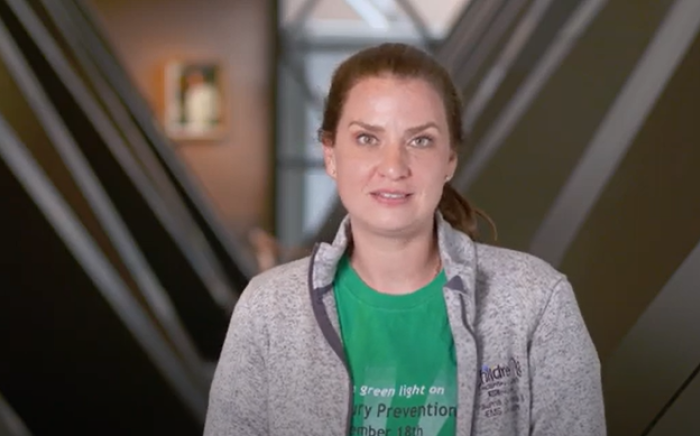Bike accidents can occur anywhere at anytime, so it is very important that your child wear a properly fitting helmet every time he rides his bike.
Helmets are essential to safety
Studies suggest that 88 percent of deaths due to head injuries could be prevented by the use of hard shell helmets.
Bike helmets are designed to perform two functions: protect the skull from fracture and protect the brain from inertial forces (movement of the brain toward the skull upon impact) by slowly decelerating the skull.
To be effective, a helmet must be worn by a child every time the child rides a bike, and must be fitted correctly to the size of the child's head, with the straps and padding properly in place.
Head injuries
Even a seemingly mild blow to the head can cause permanent brain injury. Brain injuries occur in two ways: direct contact forces and inertial forces.
Direct contact forces cause facial and skull distortions and fractures that transmit the blow to the brain.
Inertial forces generate two additional types of injury. The brain may continue moving after the skull stops, causing impact between brain surfaces and the inside of the skull. Inertial forces, particularly if the head is turning at impact, can be transmitted through brain tissue and cause distortions of small blood vessels and nerves connecting brain cells.
Although head injuries may not be visible, they can cause permanent physical, intellectual, personality and emotional changes or communication and learning disabilities. The outcome of a minor brain injury may remain unknown for months or years.
Causes of accidents
The American Academy of Pediatrics states four factors frequently associated with injurious bike accidents:
- Not wearing a helmet
- Riding a borrowed bike
- Riding double
- Inadequate rider visibility
The majority of bike accidents do NOT involve cars. Most are a result of falls. Falls can occur in the street, driveway or park - anywhere at anytime. A child on a bike always needs the protection of a helmet and other protective gear.
Teaching children to ride bikes and wear helmets
The American Academy of Pediatrics recommends that parents teach children to treat a bike not as a toy but as a speedy means of transportation which is subject to the same laws as motor vehicles.
Parents should restrict bicycling until a child can demonstrate basic competence and good judgment on a bike. A child must be able to:
- Stop the bike quickly by using the brakes
- Start riding without wobbling out of a path one yard wide
- Stop and dismount without falling
- Ride in a straight line near the curb
The most common excuse children give for not wearing helmets is that a helmet makes them look "funny" or different from their friends. Parents should teach their children, "No helmet, no bike." Parents encouraging other parents in their child's peer group to buy helmets will increase helmet usage among their own children.
St. Louis Children's Hospital's Safety Stop offers free helmet fittings and bike helmets for sale.
The child as a passenger
Experts disagree on the use of bike trailers and child carriers. Check with your pediatrician for advice specific to your family. If you choose to carry a child as a passenger on a bike you must realize that doing so makes a bike less stable and increases braking time. Your child should be belted into a seat that minimizes the risk of injury from a fall and prevents hands from getting into the spokes.
All passengers must wear a helmet. The age at which a child is ready to wear a helmet varies greatly. Consult your pediatrician regarding the use of a helmet for any child under age 1.
Choosing a bike
When choosing a bike, it is important that the bike be "tried on" for proper fit. The value of safety far outweighs the surprise value of a gift. Oversized bikes are dangerous; don't buy one for a child to "grow into." With both hands on the handlebars, the child should be able to straddle the center bar of the bike with both feet resting on the ground. If there are handbrakes, the child should be able to grasp the levers and apply pressure with ease.
10 Rules For Bike Safety
- Wear a certified protective helmet and other protective gear such as elbow and knee pads.
- Ride single file on the right side of the road, with traffic.
- Do not ride at or after dusk.
- Obey all traffic signals and stop signs. Wait for a green light.
- Stay off streets that have a lot of car and truck traffic, and wear bright colored clothing. You can also put reflective stickers on your helmet.
- Ride in a straight line near the shoulder or curb.
- Always try to ride with a buddy, but don't ride double.
- Don't ride a borrowed bike. Ride one that fits you and keep it in good working order.
- Do not use the bike to try stunts and tricks.
- Stop and look for traffic at all intersections, including those where streets cross alleys and driveways. (75 percent of child bike-accident deaths occur where driveways, alleys and streets intersect.)
(Rules adapted from American Academy of Pediatrics guidelines)












